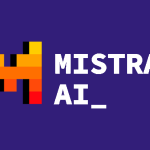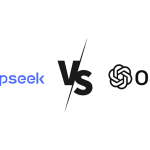In the dynamic landscape of modern business, OpenAI Integration in ERP Systems marks a revolutionary step forward. This powerful combination enhances operational efficiency, data analysis, and decision-making, providing businesses with a significant competitive advantage. As AI technologies continue to advance, integrating OpenAI in ERP Systems has become essential for companies aiming to innovate and thrive in a complex market environment.
The Evolution of OpenAI
Founded in 2015 by a group of visionary tech leaders including Elon Musk and Peter Thiel, OpenAI began as a non-profit research organization dedicated to advancing artificial intelligence for the benefit of all. Transitioning to a for-profit model in 2018, OpenAI secured substantial funding from major investors, including Microsoft, which now holds a significant stake in the company. This shift enabled OpenAI to scale its operations, develop cutting-edge AI models, and integrate these technologies into various industries, including ERP Systems.
Key Benefits of OpenAI Integration in ERP Systems
1. Enhanced Predictive Analytics
Predictive analytics is critical for businesses aiming to anticipate market trends, customer behaviors, and operational challenges. OpenAI Integration in ERP Systems enhances the accuracy and scope of predictive analytics. This integration allows businesses to analyze vast datasets to forecast sales trends, optimize inventory levels, and plan strategic initiatives with greater precision. The result is more informed decision-making and improved business outcomes.
2. Comprehensive KPI Monitoring and Analysis
Key Performance Indicators (KPIs) are essential metrics that provide insight into a company’s operational health and strategic success. By implementing OpenAI Integration in ERP Systems, businesses gain access to real-time KPI monitoring and analysis. This capability allows for immediate adjustments to strategies and operations, ensuring alignment with business goals. Advanced AI tools can visualize data through customized dashboards, providing executives with a clear, actionable overview of performance metrics.
3. Optimization of Supply Chain Management
Effective supply chain management is crucial for minimizing costs, reducing waste, and ensuring timely delivery of products. OpenAI Integration in ERP Systems provides advanced tools for supply chain optimization. AI algorithms can predict potential disruptions, identify inefficiencies, and recommend improvements. This proactive management helps businesses maintain a seamless flow of goods, reduce operational costs, and improve customer satisfaction.
4. Improved Customer Interaction and Personalization
In an increasingly digital and competitive market, personalized customer interaction is a key differentiator. OpenAI Integration in ERP Systems allows businesses to offer highly personalized customer experiences. AI-powered chatbots and virtual assistants can understand and respond to customer inquiries with tailored responses, enhancing engagement and satisfaction. This personalized approach not only improves customer loyalty but also drives sales and growth.
5. Rapid Data Processing and Analysis
The ability to process and analyze data quickly is a significant advantage in today’s fast-paced business environment. OpenAI Integration in ERP Systems enables real-time data processing, facilitating swift decision-making and operational adjustments. Whether it’s financial reporting, inventory tracking, or market analysis, businesses can leverage AI to gain timely insights, maintain agility, and stay ahead of the competition.
Detailed Steps for Integrating OpenAI with ERP Systems
Integrating OpenAI with ERP Systems is a multi-faceted process that requires careful planning and execution. Below are the detailed steps involved:
Step 1: ERP Vendor Selection
Choosing the right ERP vendor is crucial for a successful integration. Businesses should seek vendors with a proven track record in AI integration and specific expertise in OpenAI Integration in ERP Systems. Key considerations include the vendor’s technical capabilities, support infrastructure, and experience with similar projects. A thorough evaluation and selection process can help ensure a smooth integration and ongoing support.
Step 2: Dataset Preparation and Training
Data is the backbone of any AI system, and preparing the right dataset is essential for training OpenAI models. This involves gathering relevant data from internal and external sources, cleaning the data to remove inaccuracies and redundancies, and structuring it in a format suitable for AI processing. The quality and comprehensiveness of the dataset directly impact the accuracy and effectiveness of the AI models, making this step critical for successful OpenAI Integration in ERP Systems.
Step 3: Model Selection and Customization
OpenAI offers various models, each with distinct capabilities. For example, GPT-3 is renowned for its language processing abilities, making it ideal for tasks such as customer interaction and content generation. DALL-E, on the other hand, excels in generating images from textual descriptions. Businesses must select the model that best suits their specific needs and customize it to align with their operational goals. Customization may involve fine-tuning the model’s parameters, training it on industry-specific data, and integrating it with existing business processes.
Step 4: Integration and Deployment
The next step involves integrating the AI model with the ERP system. This requires technical expertise to ensure seamless data flow and system interoperability. Businesses need to connect the AI model with their existing data sources and ERP modules, ensuring that it can access and process data efficiently. This phase also includes setting up APIs and configuring the system to handle real-time data exchange and analysis, which is crucial for effective OpenAI Integration in ERP Systems.
Step 5: Testing and Quality Assurance
Before full deployment, the integrated system must undergo rigorous testing to ensure its accuracy, reliability, and compatibility with existing business processes. This includes functional testing to verify that the system performs as expected, stress testing to evaluate its performance under high loads, and usability testing to ensure that it meets user requirements. Identifying and resolving any issues during this phase is crucial to preventing disruptions post-deployment in OpenAI Integration in ERP Systems.
Step 6: Ongoing Monitoring and Optimization
Post-deployment, businesses must continuously monitor the system’s performance and make necessary adjustments. This includes tracking the accuracy of predictions, the efficiency of data processing, and the quality of customer interactions. Regular updates and optimizations ensure that the AI system adapts to changing business needs and continues to deliver value, enhancing the overall effectiveness of OpenAI Integration in ERP Systems.
Future Implications of OpenAI-Enhanced ERP Systems
The integration of OpenAI into ERP Systems is a transformative trend that is likely to redefine business operations across industries. As AI technologies continue to evolve, their applications within ERP systems will expand, offering even more sophisticated tools for data analysis, decision-making, and customer engagement. This evolution presents opportunities for businesses to innovate, streamline operations, and enhance their competitive edge.
Emerging Trends and Future Innovations in OpenAI-Enhanced ERP Systems
As the integration of OpenAI into ERP systems matures, several emerging trends and innovations are shaping its trajectory. Businesses that stay ahead of these advancements will be better equipped to leverage AI-driven ERP systems for long-term success. Below are some key trends to watch and adopt:
1. Integration of IoT and OpenAI in ERP Systems
The Internet of Things (IoT) is revolutionizing data collection by enabling real-time monitoring of equipment, inventory, and customer behaviors. Combining IoT with OpenAI in ERP systems allows for advanced predictive maintenance, real-time inventory tracking, and dynamic supply chain adjustments. For instance, IoT sensors can feed live data into the ERP system, while AI models analyze the data to predict failures, optimize workflows, or enhance customer experiences.
2. Adoption of Generative AI for Strategic Decision-Making
Generative AI models, such as OpenAI’s GPT-4, are becoming increasingly instrumental in strategic decision-making. These models can simulate scenarios, draft strategic plans, and even generate creative solutions to complex problems. Integrating generative AI into ERP systems allows businesses to explore innovative approaches, from product development to market expansion strategies, all grounded in data-driven insights.
3. AI-Driven Workforce Optimization
OpenAI-enhanced ERP systems are transforming workforce management through intelligent scheduling, skill-matching, and employee engagement analytics. AI models can analyze historical data to forecast staffing needs, identify skill gaps, and recommend training programs. This ensures businesses have the right talent at the right time, boosting productivity and reducing operational costs.
4. Hyperautomation with AI
Hyperautomation involves the use of advanced technologies, including AI, to automate complex processes that were previously unmanageable. OpenAI integration takes hyperautomation to the next level by enabling self-learning ERP systems that adapt to evolving business needs. Tasks like financial reconciliation, compliance reporting, and customer onboarding can be fully automated, freeing up resources for strategic initiatives.
5. Enhanced Cybersecurity and Compliance
With data becoming increasingly central to business operations, cybersecurity and regulatory compliance are critical. OpenAI-enhanced ERP systems can proactively detect potential threats, ensure data integrity, and support compliance with industry regulations. By continuously monitoring system activity and analyzing behavioral patterns, AI models can mitigate risks before they escalate.
6. Sustainability and Green Initiatives
As businesses aim to achieve sustainability goals, AI-powered ERP systems can play a crucial role. OpenAI models can optimize energy consumption, reduce waste in supply chains, and track carbon footprints. By aligning operations with environmental objectives, businesses can improve sustainability while maintaining profitability.
7. Augmented Reality (AR) Integration with ERP
The convergence of AR and OpenAI in ERP systems opens new possibilities for immersive training, inventory management, and customer support. For example, warehouse staff can use AR glasses to visualize inventory locations, while AI processes the data to recommend efficient routes and restocking strategies.
Conclusion
The integration of OpenAI into ERP Systems is more than just a technological upgrade; it is a strategic transformation that offers profound benefits. By enhancing predictive analytics, optimizing supply chain management, improving customer interactions, and enabling rapid data processing, OpenAI Integration in ERP Systems empowers businesses to operate more efficiently and effectively. As companies continue to navigate the complexities of the modern market, adopting AI technologies will be crucial for sustained growth and success.
For businesses looking to leverage the full potential of AI, integrating OpenAI into their ERP systems is a forward-thinking investment that promises to drive innovation, efficiency, and profitability. This integration not only addresses current operational challenges but also positions businesses to capitalize on future opportunities in an increasingly data-driven world.







